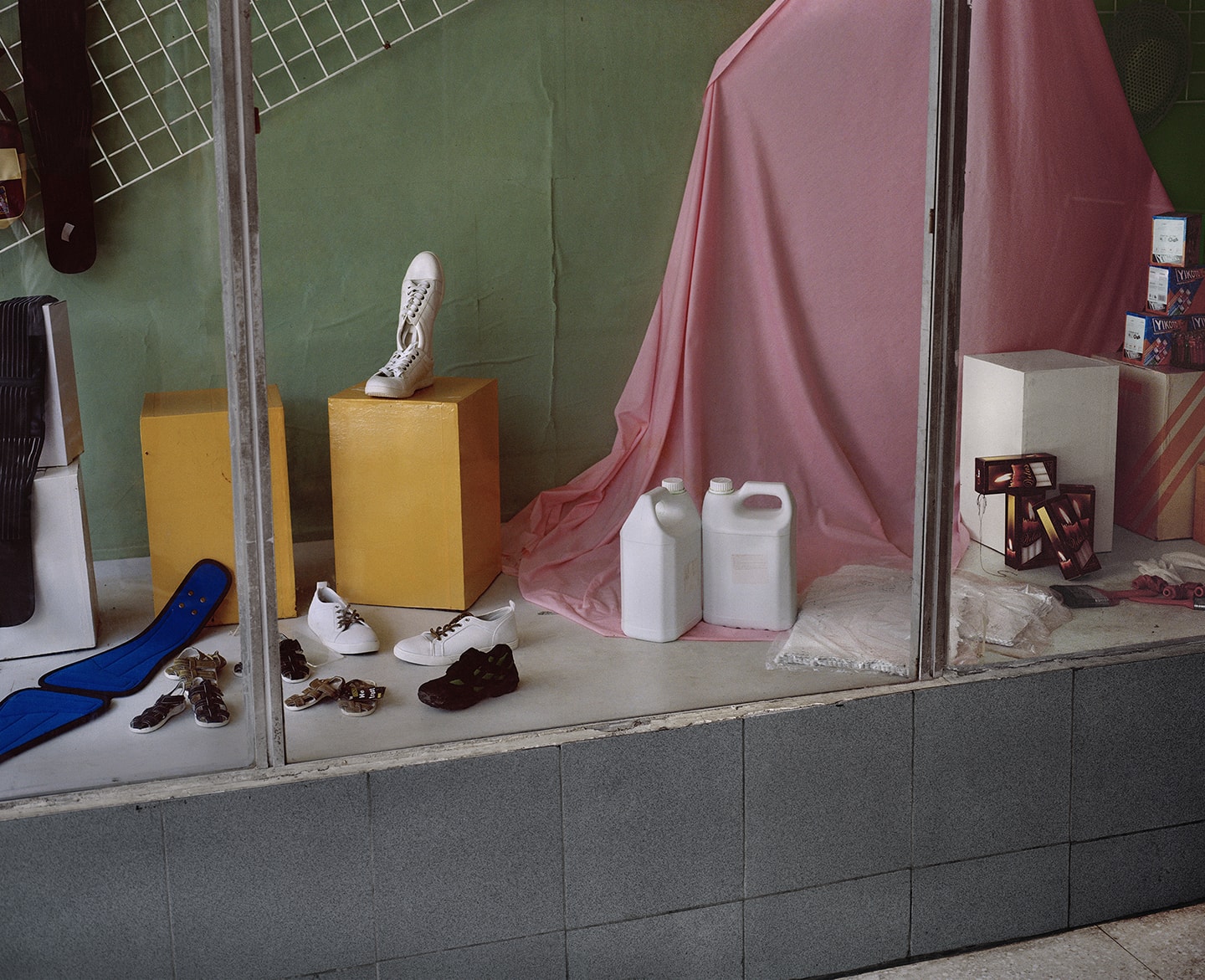
Latin American showcases: artisan resistance to globalization
By chance, the Mexican Pablo López Luz took the first photograph of a display case. He was working on another project. He later noted that this could become a theme in itself: artisan showcases, showcases displaying homemade clothes, showcases in Latin America that resist the violent advance of globalization. This is how Baja Moda was born, the project in which he collects images of clothing stores that survive throughout various countries in the region.
Pablo López Luz did his master’s degree in visual arts at New York University and at the International Center of Photography (New York). He has exhibited at Fondation Cartier (Paris), SFMoMa (USA), El Chopo University Museum (Mexico), National Gallery of Canada (Canada), The Photographers ’Gallery (United Kingdom) and the Arróniz Contemporary Art Gallery, among other spaces. With his projects Terrazo, Pyramid or Piedra Volcánica, he asks questions that go beyond urban landscapes. He is passionate about discovering a certain background identity and, at the same time, understanding how that identity is reflected in the urban fabric of cities. “I think we understand identity in a very specific way: through archaeological sites, or historical spaces, or through traditions like food. But identity is also found in the urban fabric of the city, hidden in the urban details”, he reflects.
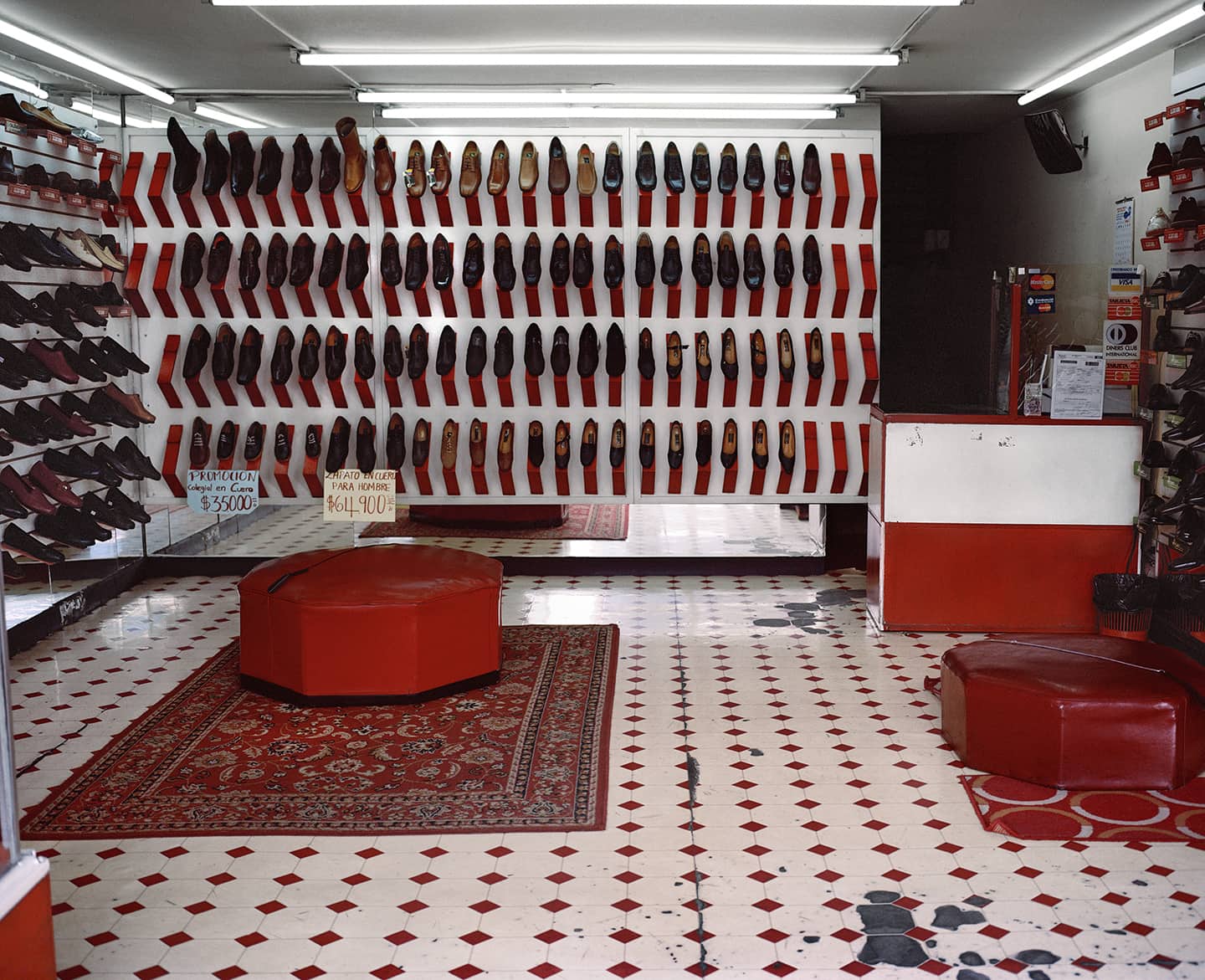
Baja Moda / Bogota – Pablo López Luz
What is the Baja Moda project about?
The title of Baja moda (Low fashion) is kind of a wink, playing with the concept of “haute couture” or “high fashion” that dominates the international market, compared to a supposedly minor fashion, made by Latin American artisans, and that does not achieve cross borders outside your locality. It is a project with a more political focus, that confronts you with the historical reality of Latin America, and that goes beyond the document or the photographic record. The first photograph was born a bit by chance, in the city of Parral, Chihuahua, while I was working on another project in 2014. Since then, the idea of photographing fashion showcases in Latin America that fulfilled certain requirements. Generally, they are artisan stores (shoe stores, tailors, shirt stores) that are the ones that make the clothes or shoes that are sold in those stores, or stores of relatives who inherited over time. The idea was: that they were places that have been open for several decades, shops and stores with products made in the countries, that would have managed to resist the onslaught of globalization, international trade, and the market made in China. It is a project that represents Latin American resistance.
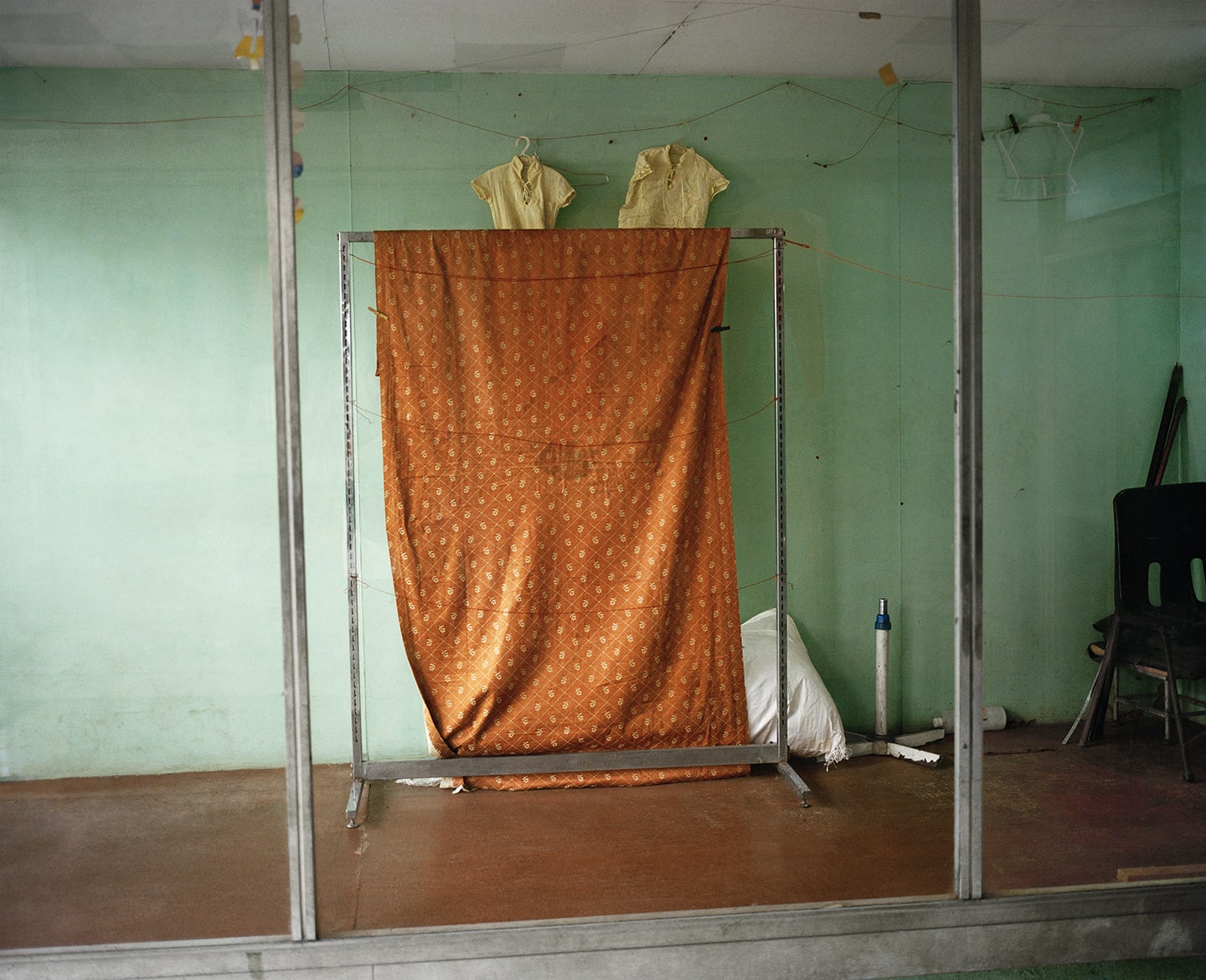
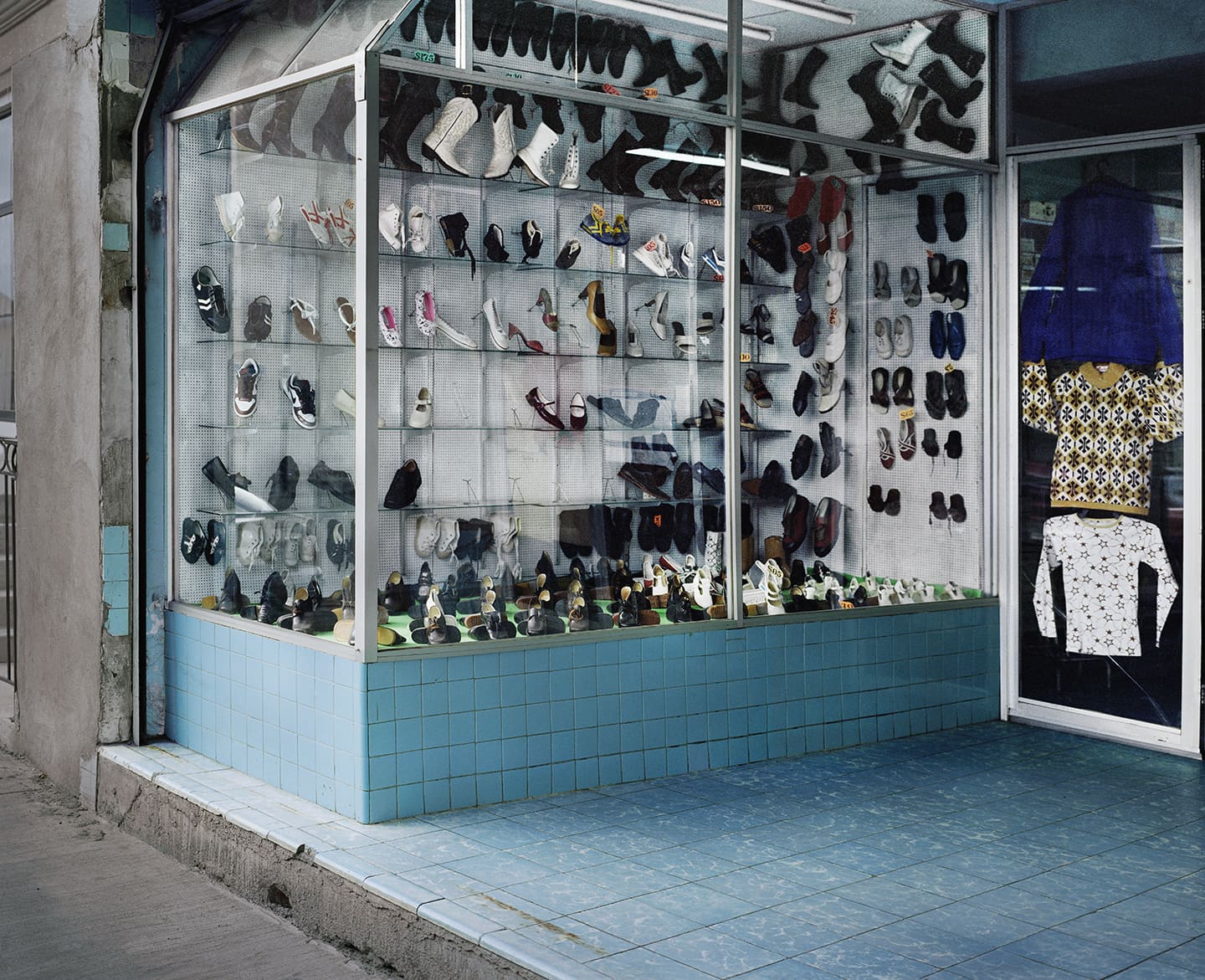
Baja Moda CIV / Pablo López Luz
And how did you think of the project in such a broad framework as Latin America?
At first, I was thinking of doing it only in Mexico, but little by little, it expanded until I considered expanding it to the Latin American continent. In recent years I have been focused on various projects in Latin America and it worked well for me to work in two or three at the same time, especially since these fashionable places are increasingly hard to find. They are also places that constantly close and disappear. That is why it has taken me almost seven years to complete the project. On the other hand, I did not have the resources to be traveling for so long, so it was about pooling the resources and adding projects. Asking a lot, walking a lot.
Latin America is made up of many different identities. The main idea, which has been present in several of my projects, was to see the relationship between the historical past, the present, and the contemporary city.
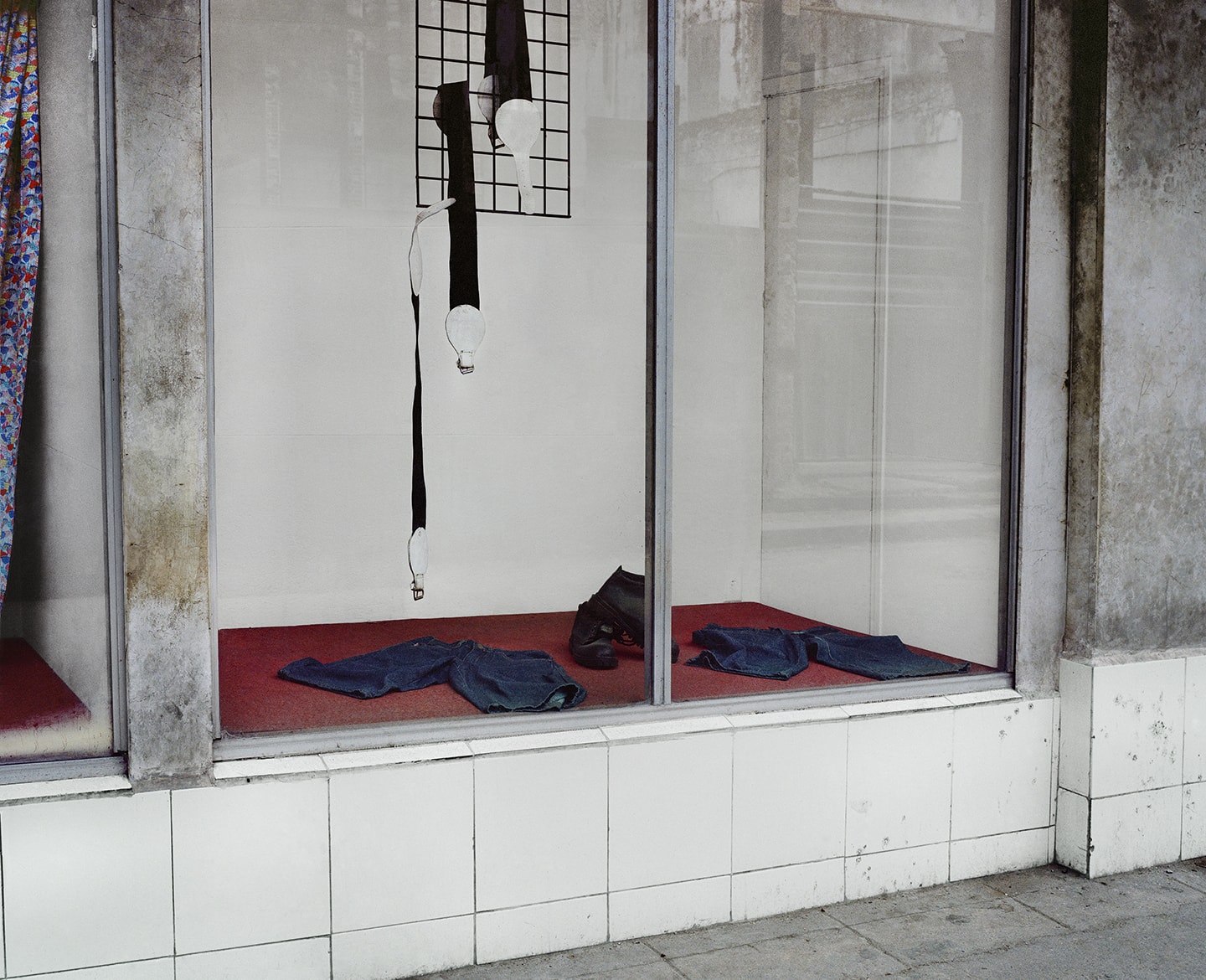
Baja Moda / Pablo López Luz
Have you found common aspects between the windows of the different places?
I would say, above all, persistence, enduring the passage of time: a kind of Latin American artisanal resistance. On some of my trips through Peru, after walking and going through all the streets of the historic center of Trujillo, I found a small shoe store with only four pairs of shoes of different models and different sizes. The store’s subsistence depended on a customer with those specific shoe size and model needs. The store owners, a couple of shoemakers, because of their age no longer worked on new models. During my travels, I had the opportunity to speak with several of the owners of these stores and, in general, I found people who were proud to keep their businesses open and stand the test of time for so many years. Resistance and pride, those two words.
The project was like a race against time: reaching the premises before they closed. And now, perhaps, with the pandemic, it is highly probable that many of these stores have not survived, they have not withstood the economic blow of the closure. Baja Moda’s photographs are almost like a historical record of something that was there and that in a few years will probably have completely disappeared. For this reason, during the project, there was always a feeling of a rush to reach the stores before it closed and disappeared. At times, even following recommendations and directions from friends, I was late to various venues.
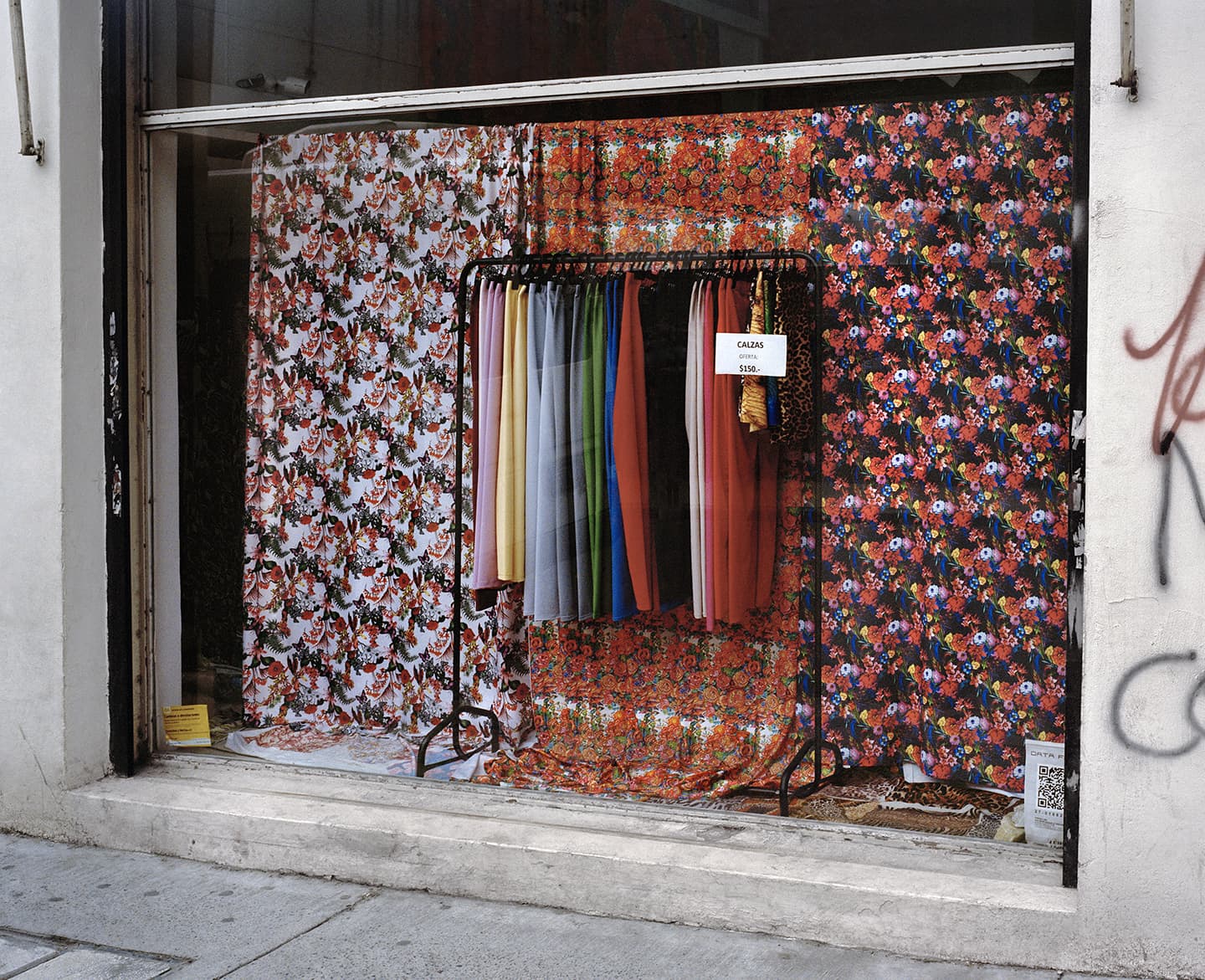
Baja Moda / Pablo López Luz
Will it be a book?
Yes, the invitation to publish the book forced me to close the project, which in this specific case was particularly hard. After seven years of working at Baja Moda, there were several unresolved pending issues, countries that unfortunately I could not visit showcases that I could not return to photograph for a second time. The year (or years) of the pandemic cut off the possibility of continuing to travel and I had to abandon several pending itineraries. There are a couple of countries that I did not reach that I would have loved to include in the project. However, sometimes it takes an outside voice to help close and let go of those endless projects. I am fortunate to have a team of friends that I fully trust, who helped me to trust the project, to conclude it and edit it.
The book will be published at the end of this year under the RM Editorial label, with whom I have been working for several years and with whom I have published my previous books. A few months ago, Ramón Reverte, the director of the publishing house, approached me with the idea of publishing the Baja Moda book. We had been discussing and sharing the project for several years. We had been in contact since a couple of years ago I received a scholarship from the MAST Foundation in Bologna. The book is in the final design stage, in the hands of the French designer Olivier Andreotti, with whom I have collaborated in my previous publications. It will have approximately 50 images photographed in Argentina (one of the countries where it was most difficult for me to find venues), Chile, Paraguay, Ecuador, Peru, Mexico, and Cuba.
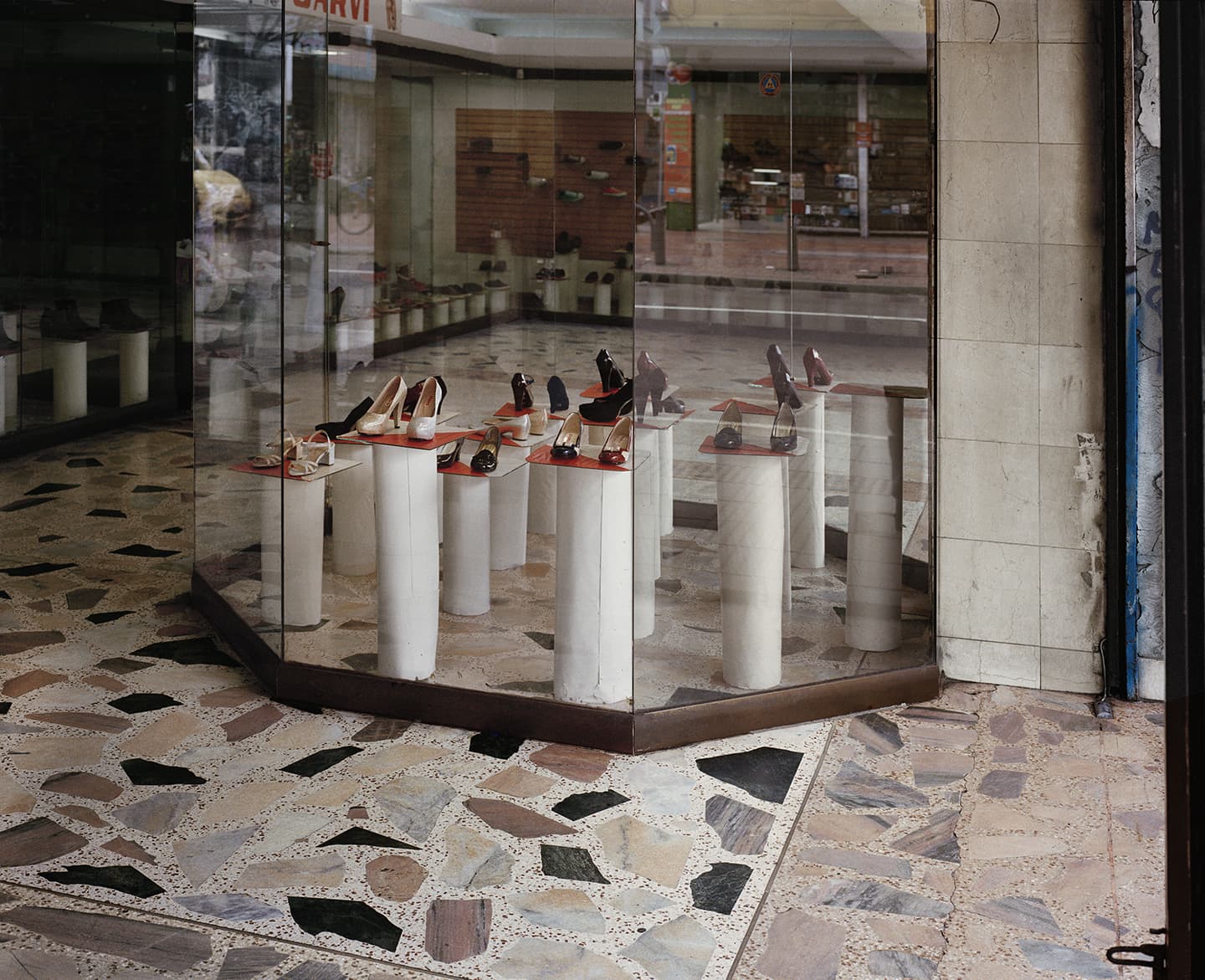
Baja Moda CIV / Pablo López Luz